As an Amazon Associate, I earn from qualifying purchases.
Learn the secrets of how to make amazing refrigerator dilly beans. This easy recipe for refrigerator pickled beans involves zero canning and will help you “put up” the summer bounty in a delicious and snackable way.
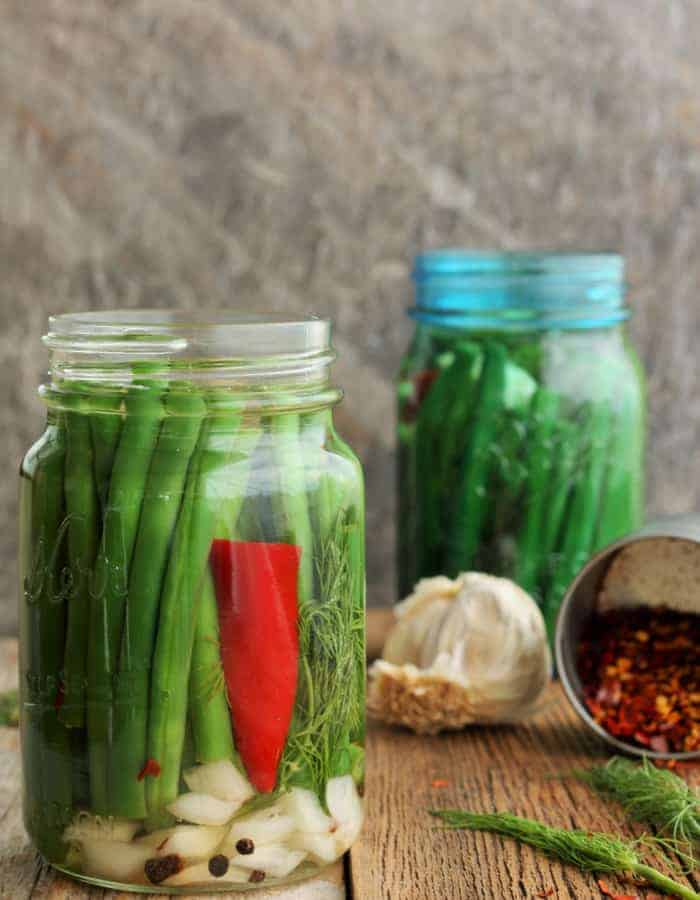
Dilly beans are one of those foods that I have a hard time controlling myself around once I get started. They’re so crunchy, delicious, and snackable that you’ll just want to keep eating them.
At least they’re a vegetable, right? Surely, vegetable bingeing can’t be bad.
If you have leftover beans after making this recipe, and are running out of fridge space, check out this post on how to can green beans for a shelf-stable option.
Just a quick note, this recipe is for refrigerator dilly beans. These beans are NOT shelf stable and must be stored in the fridge. They should not be canned as the recipe is written.
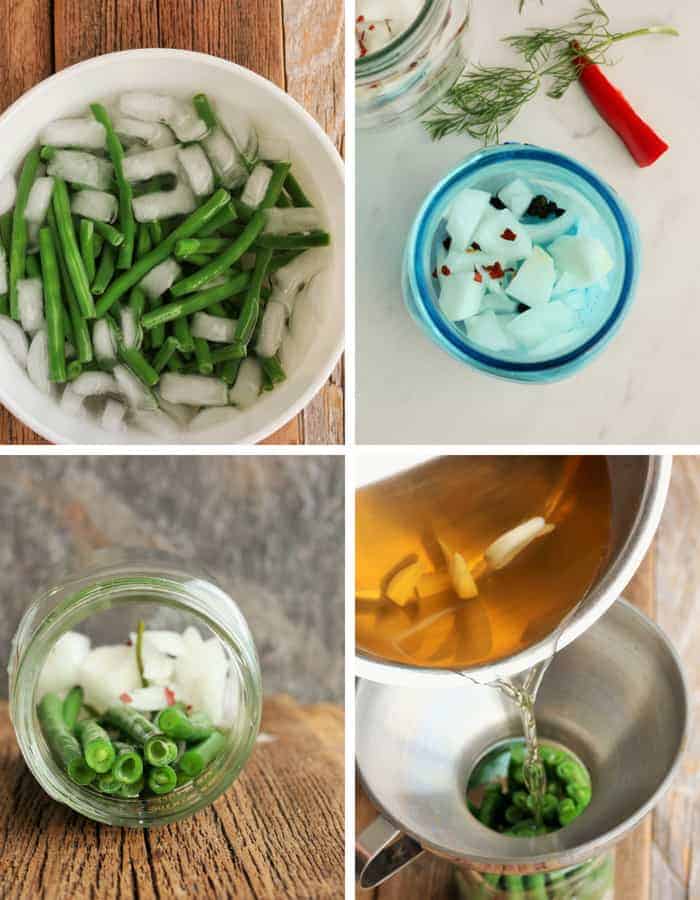
How Long Do You Have to Wait To Eat Dilly Beans?
Allow the jars to sit in the fridge for two days before consuming. But um, if you’re anything like me, you may need to do a few hundred test bites before those two days are up!
Pro Tips/Recipe Notes:
- Use bush or pole beans that are fairly uniform in size. I like to pick beans no wider than a pencil.
- Use the freshest beans you can find; farmer’s markets and backyard gardens are a great source for freshly-picked beans. The fresher the beans, the crispier the finished product.
- On average, one pound of beans = one quart of dilly beans.
- This recipe makes two quarts. For jars, you could use 1 half-gallon jar, 2 quarts, or 4 pints. It really comes down to what works best for you and the space that you have in your fridge.
- Use regular mouth jars if possible. The shoulders/neck of the jars keep the beans in place. And lean those jars on the side when stuffing the beans in. It helps you pack them in better.
- The dilly beans will keep in the fridge for 3-6 months.
- You do not need to sterilize the jars as if you were going to can them. But do make sure they’re clean!
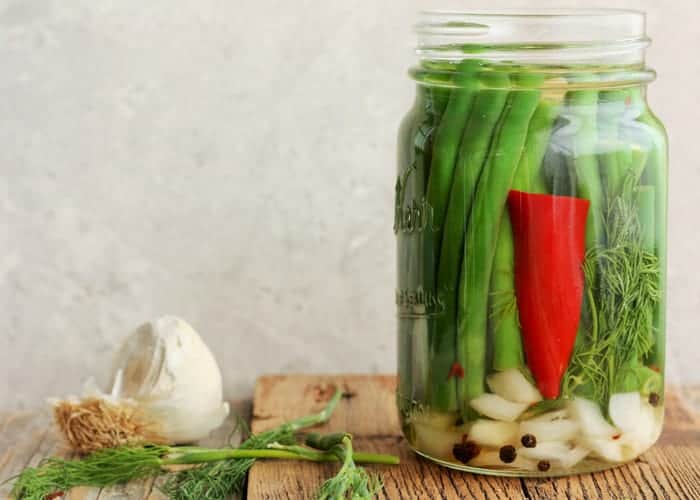
Refrigerator Dilly Beans Recipe (No Canning Needed)
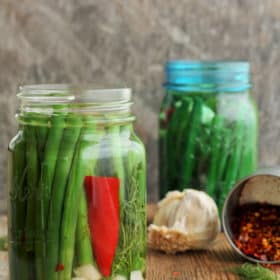
Ingredients
- 2 pounds green beans {washed and trimmed}
- ice water {for blanching}
- 1 cup white vinegar
- 1 cup apple cider vinegar
- 1 cup water {plus more for boiling the beans}
- 2 tbsp sugar
- 2 cloves garlic {halved}
- 1.5 tsp kosher salt
- 1/2 cup onion {minced}
- 4 sprigs fresh dill
- 1/2 tsp black peppercorns
- 1/2 tsp red pepper flakes {dried}
- 2 small chilies {optional}
Instructions
Make the Brine
- In a saucepan, bring water, vinegar, salt, sugar, and garlic to a boil.1 cup white vinegar, 1 cup apple cider vinegar, 1 cup water, 2 tbsp sugar, 1.5 tsp kosher salt, 2 cloves garlic
- Once the mixture has boiled and the sugar has dissolved, remove from heat, set aside and allow it to come to room temperature.
Blanching the Green Beans
- Bring ~2 quarts of water to a boil in a medium saucepan.
- Add the green beans and allow them to cook for 1 minute.2 pounds green beans
- Drain green beans and immediately put in a bowl of ice water for 5 minutes. Drain the beans again and set aside.ice water
Assemble the Dilly Beans
- Equally divide onions, peppercorns, red pepper flakes, and optional chilies in the bottom of clean jars.1/2 cup onion, 1/2 tsp black peppercorns, 1/2 tsp red pepper flakes, 2 small chilies
- Add beans to the jars. Tuck some of the dill amongst the beans.4 sprigs fresh dill
- Pour the brine over the beans, put a lid on the jars and keep them on the counter for 12 hours.
- After 12 hours, transfer the jars to the fridge. Allow them to sit in the fridge for 2 days before consuming.
Notes
- Use the freshest beans you can find; farmer’s markets are a great source for just-picked beans. The fresher the beans, the crispier the finished product.
- On average, one pound of beans = one quart of dilly beans.
- Use regular mouth jars if possible. The shoulders/neck of the jars keep the beans in place.
- This recipe is not safe for canning.
Nutrition
Nutrition information is automatically calculated, so should only be used as an approximation.

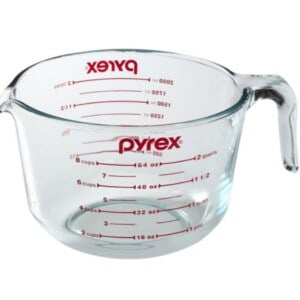
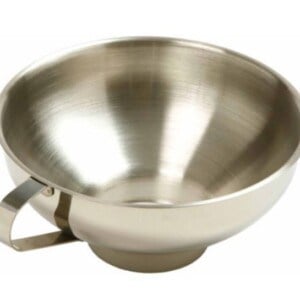
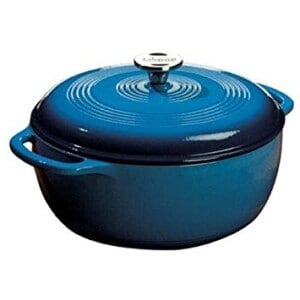
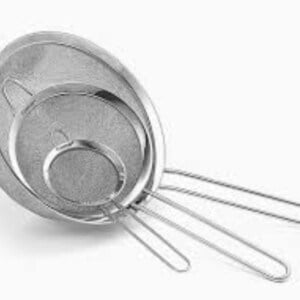

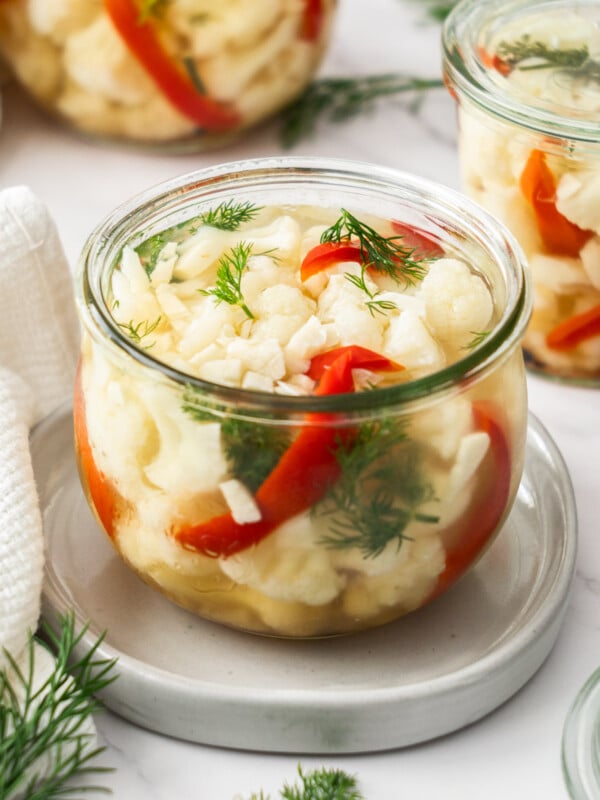
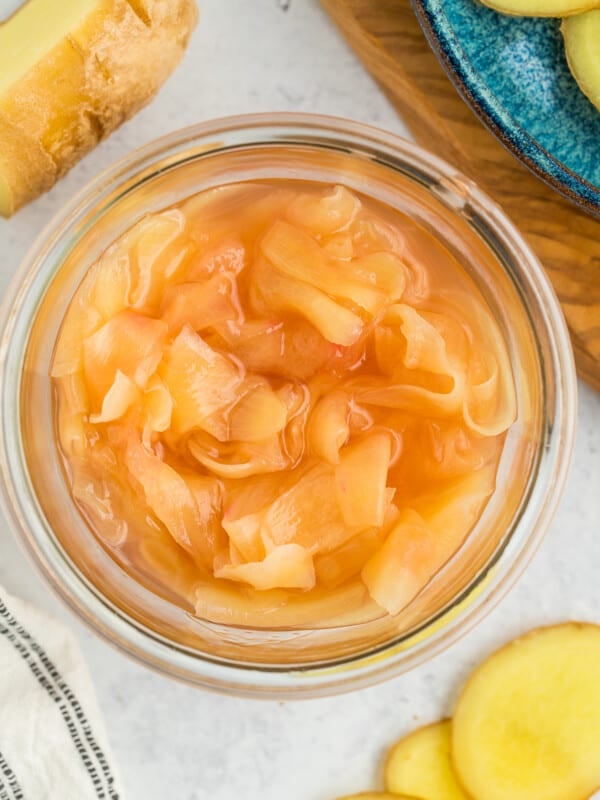
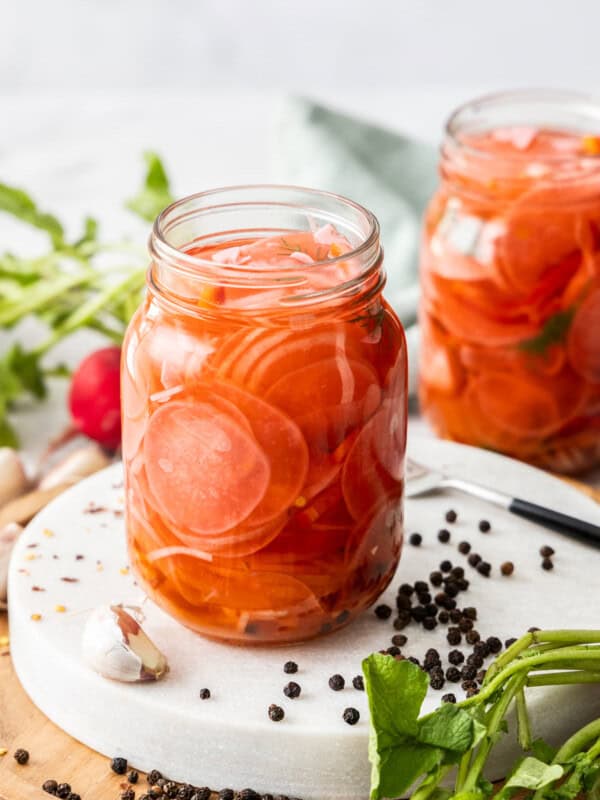
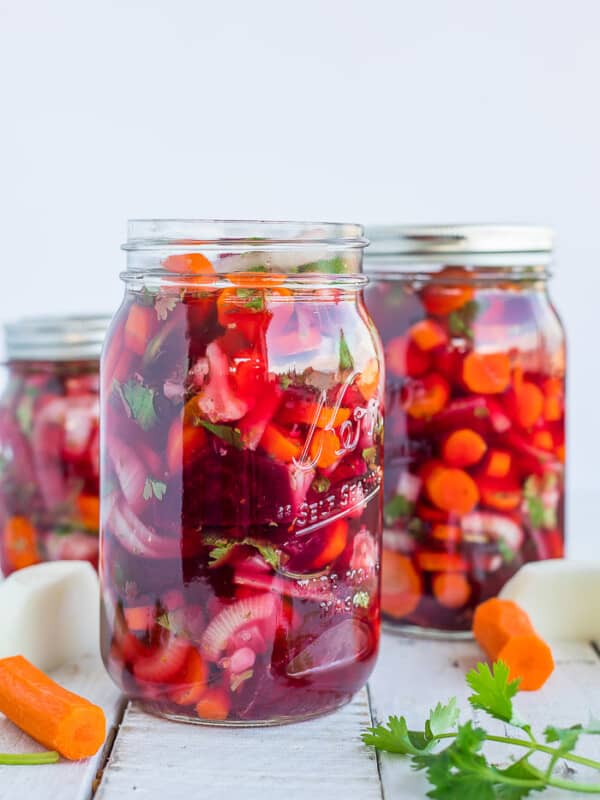
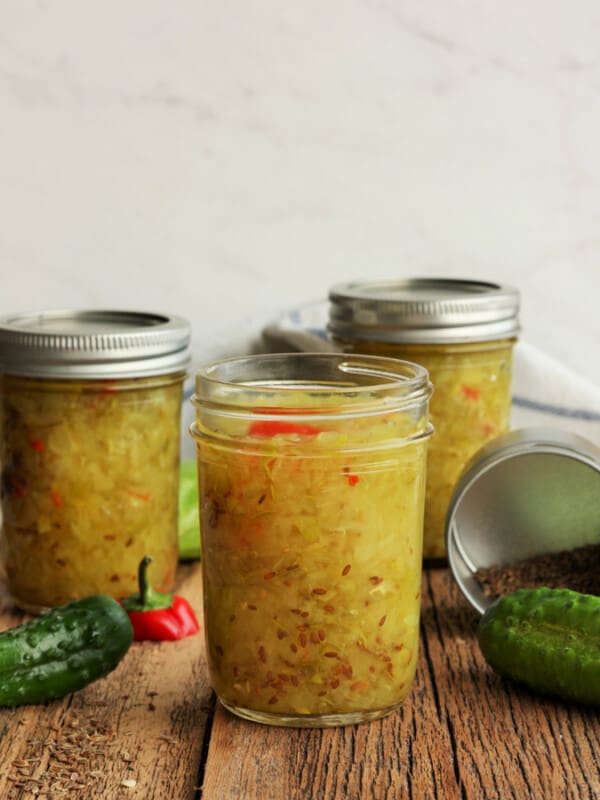
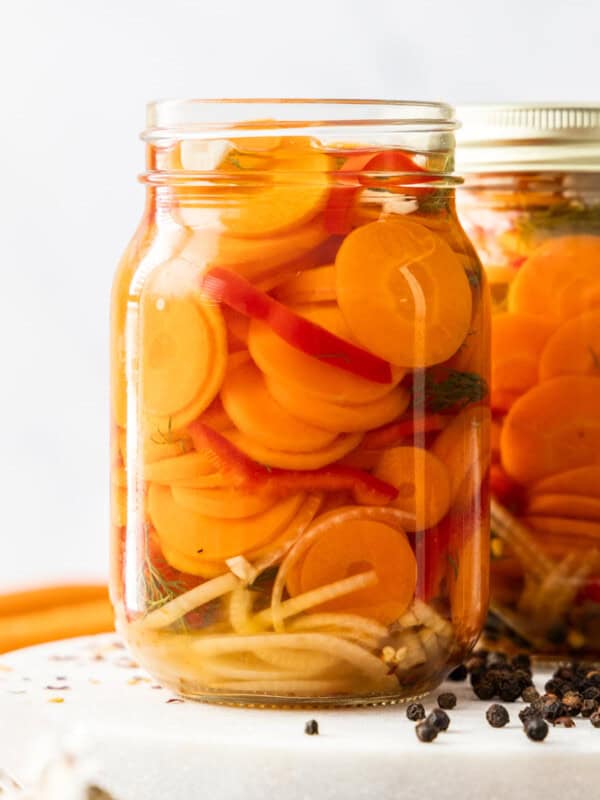
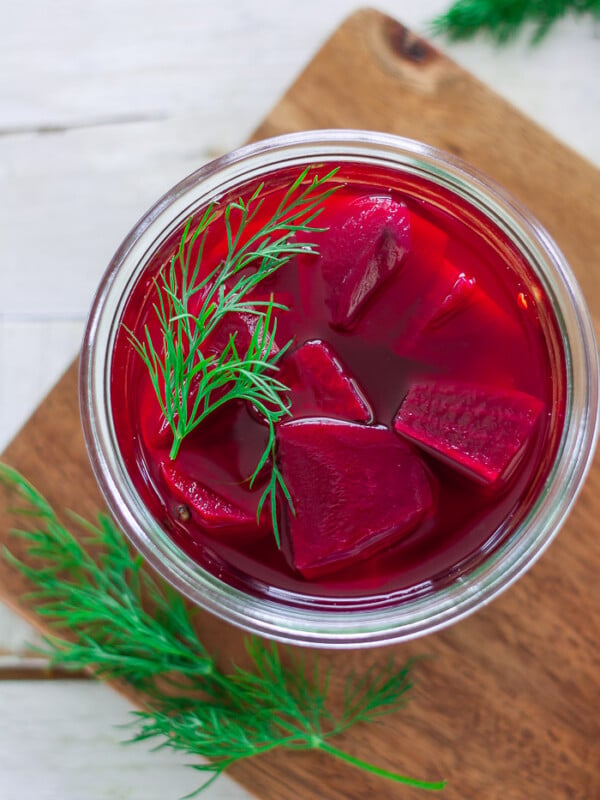






I followed your recipe exactly, but only had enough brine for one quart jar. One quart is 4 cups, which checking your recipe is about right. You might want to change this.
Hi Diana, I’m not sure what went wrong for you, because we make this recipe often and other readers have not shared the same experience.
Once quart is 4 cups, but only if there is nothing else in there. As the jars are stuffed full of beans, you can’t fill a quart jar with 4 cups of brine. It should be enough to fill the two quarts. My best guess is that perhaps the beans were packed differently in your jars.
I’m definitely going to try your recipe thank you,
Question. I prepared 1 lb of green beans. Used one quart jar. I halved the brine quantity shown for 2 lb beans but it filled less than half of the jar. Is it supposed to be that little? I made more brine and added it so it filled the jar. Your thoughts?
Hi VJ, it might come down to how you packed the jars and the size of the beans. Too few beans can create extra space, meaning you’d need more brine to fill that space.
Adding more brine is totally fine!